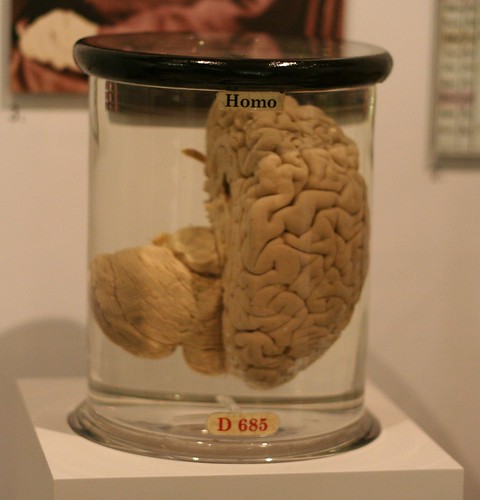As part of my undergraduate degree I spent a number of sessions studying the anatomical details of preserved human brains. I’m not sure why, but part of me naively expected there to be something awe-inspiringly beautiful about the organ which makes us who we are. Indeed, I can’t deny I was slightly disappointed when our class was presented with a small wrinkled object, dull pink in colour and with a consistency I would liken to children’s play putty. However, looking back on this experience I feel humbled by the knowledge that we are who we are because of this reasonably mundane organ.
The human brain weighs around three pounds (a similar weight to three loaves of bread) and houses as many as 100 billion brain cells (neurons). These cells form a number of intricate networks, specialised towards converting sensory information, smell, taste, touch, vision into conscious experience and action.
During our early development neurons forge set communication pathways, the course of which are specified by our genetic code. This genetic framework ensures that we all have the same basic neuronal scaffolding i.e. sensory cells of the eye contact visual areas of the brain whilst those from the ear contact auditory centres etc. (note when things go wrong: Synesthesia). This means that to a large extent we all experience the world in a similar manner. However, the numerous idiosyncrasies which make us individual are likely to depend on the brain’s ability to subtly modify the wiring in many of these networks. Therefore, although some important connections in the brain are hard wired from early childhood, others are referred to as ‘plastic’ and can change throughout life. This ‘plasticity’ underlies the brain’s ability to adapt to new situations and learn new information.
 Our brains are plastic…well not literally.
Our brains are plastic…well not literally.
The wiring patterns of cells within brain networks can be altered through three different methods:
- The strength of pre-existing neuronal connections may change (also known as synaptic plasticity).
- The way individual neurons respond when activated may alter.
- New connections may be formed or old ones removed.
Of the above list method 1 is the most widely studied and also happens to be the form of memory my research focuses on. This type of memory requires changes to occur at the region where two neurons connect (commonly referred to as a synapse). Therefore, to fully understand how this process works it is first necessary to appreciate how neurons communicate through these synapses.
A typical neuron can be separated into three functional segments; the dendrites, the axon and the cell body. Although the shape and size of these segments varies from cell to cell, their functions remain largely conserved. Dendrites are the neurons primary input structures, they spread out like branches (hence the name dendrite: from Greek, dendron, ‘tree’) and form synapses with axon terminals of neighbouring cells. Conversely, axons are the neurons primary output structure, transmitting messages from the neuron cell body to other local cells. The cell body, or soma, sits between these two segments supervising the resulting conversation, listening to input from the dendrites and deciding upon the best answer to send via the axon.
As the name ‘synaptic plasticity’ indicates, the all-important structure for this form of memory is the synapse. Therefore, using the magnifying glass pictured above, we can now zoom in even further and take a look at how a single synapse on the above neuron functions.
The synapse is where an axon terminal from one neuron meets a dendrite of another. Scientists used to think that these two structures touched, however, we now know that a small gap of around 12-20 nano meters (one nano meter is a billionth of a meter) exists between them, this gap is called the ‘synaptic cleft’. The axon terminal communicates by releasing chemicals, known as neurotransmitters, into the cleft. This chemical message crosses the gap and is detected by structures on the adjoining dendrite, thereby notifying the receiving neuron that a communication event has occurred (Note: there are many types of neurotransmitter each of which have different effect on the receiving dendrite).
Individual neurons receive a large number of synaptic connections. These synapses are not all equal, some will have a strong effect on the receiving neuron, encouraging it to send out a message of its own, whilst others will be weaker only exerting a small effect. Indeed, a number of these weak synapses may need to work together to cause the receiving cell to react in the same way as it did to input from one strong synapse. However, the strength of a synapse is not set in stone. Synapses themselves are ‘plastic’ and, given the correct circumstances, can be strengthened or weakened.
Such changes enable us to adapt to new situations, form new memories and are ultimately essential for us to lead a normal life. Hence why it is so important that we understand how and why some synaptic connections become strengthened whilst others do not. This knowledge will not only lead to a better understanding of human memory but will also help us understand what happens when things go wrong, for example during diseases such as Alzheimer’s.
Post by: Sarah Fox


